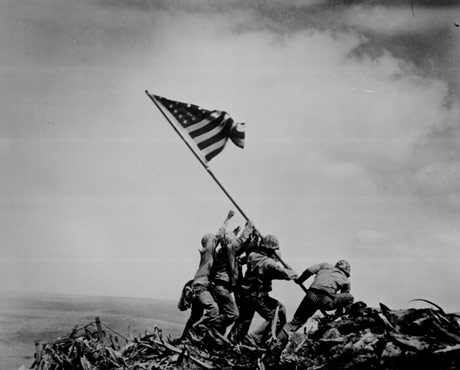
If you’ll make a top of the world’s most important war pictures, this Pulizer wining image will be on the first place for sure. For Americans, if they have to describe “patriotism” in a single picture, this will be more than enough.
“On Friday, February 23, 1945 at around 1:00 PM, four days after the Marines landed at Iwo Jima, the photographer Joe Rosenthal was making his daily visit to the island on a Marine landing craft when he heard that a flag was being raised atop Mount Suribachi, a volcano at the southern tip of the island. Upon landing, Rosenthal hurried toward Suribachi, lugging along his bulky Speed Graphic camera, the standard for press photographers at the time. When he got about halfway up, he was told that a flag had already been raised on the summit. He continued up anyway to photograph the flag flying. On the summit, Rosenthal discovered a group of Marines attaching a larger flag to a length of pipe. Nearby, another group of Marines stood ready to lower the smaller flag at the same instant the larger was raised. Rosenthal briefly contemplated attempting to photograph both flags, but decided against it, so he focused his attention on the group of Marines preparing to raise the second flag. Rosenthal piled stones and a sandbag so he had something on which to stand, as he was only 1.65m tall. He set his camera for a lens setting between f/8 and f/11 and put the speed at 1/400th second. Then, out of the corner of his eye, he saw the group of Marines start to raise the second flag. He swung his camera around toward the action and pushed the shutter. To make sure he had a worthwhile photo to send to the AP, he gathered the Marines on the summit for a shot under the flag.
There are six Flag Raisers on the photo. Four in the front line and two in back. The front four are (left to right) Ira Hayes, Franklin Sousley, John Bradley and Harlon Block. The back two are Michael Strank (behind Sousley) and Rene Gagnon (behind Bradley). Strank, Block and Sousley would die shortly afterwards. Bradley, Hayes and Gagnon became national heroes within weeks.
The American people saw Rosenthal’s photo as a potent victory symbol. Wire services flashed the iconic Pulitzer Prize winning photograph around the world in time to appear in the Sunday newspapers on February 25, 1945. Many magazines ran the photo on their covers. Artists later used the photo as a model for the United States Marine Corps War Memorial, commonly referred to as “The Iwo Jima Memorial”, at Arlington, and the U.S. Postal Service put the photo on a US postage stamp. A version also stands on the parade ground at Marine Corps Recruit Depot Parris Island, South Carolina,
Rosenthal left the AP later in 1945 and became the chief photographer and manager of Times Wide World Photos.He then later joined the San Francisco Chronicle. He worked there as a photographer for 35 years, before retiring in 1981. On August 21, 2006, at age 94, Rosenthal died of natural causes in his sleep at a center for assisted living in Novato, a suburb of San Francisco.
Iwo Jima, meaning “sulfur island” is a volcanic island of Japan, part of the Volcano Islands (the southern part of the Ogasawara Islands), approximately 1200 kilometres south of Tokyo. It is famous as the site of the Battle of Iwo Jima in February and March 1945 between the United States and Japan during World War II. The U.S. occupied Iwo Jima until 1968, when it was returned to Japan.”
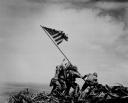
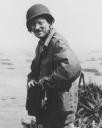



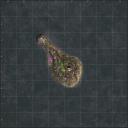



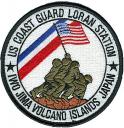
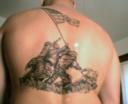
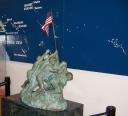

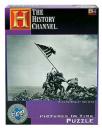


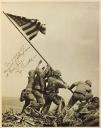


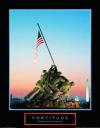

I saw a film about this recently, It’s called Flags of Our Fathers.
http://www.imdb.com/title/tt0418689/